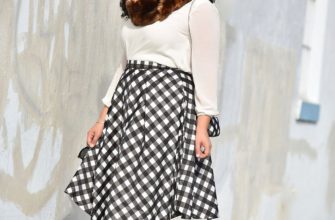To eliminate a defect in the fabric, namely to sew up a hole, you can use several techniques and methods. This can be an internal patch, applique, decorative overlay, or the formation of invisible seams. You can sew on patches or form tightening seams manually or on a sewing machine.
How to mend clothes without threads and a sewing machine
The seam will not have the best effect on the appearance of the product, so you need to look for another way to solve the problem. A patch is a last resort. It turns out that you can sew up a hole without a seam, a needle and thread in a matter of minutes.
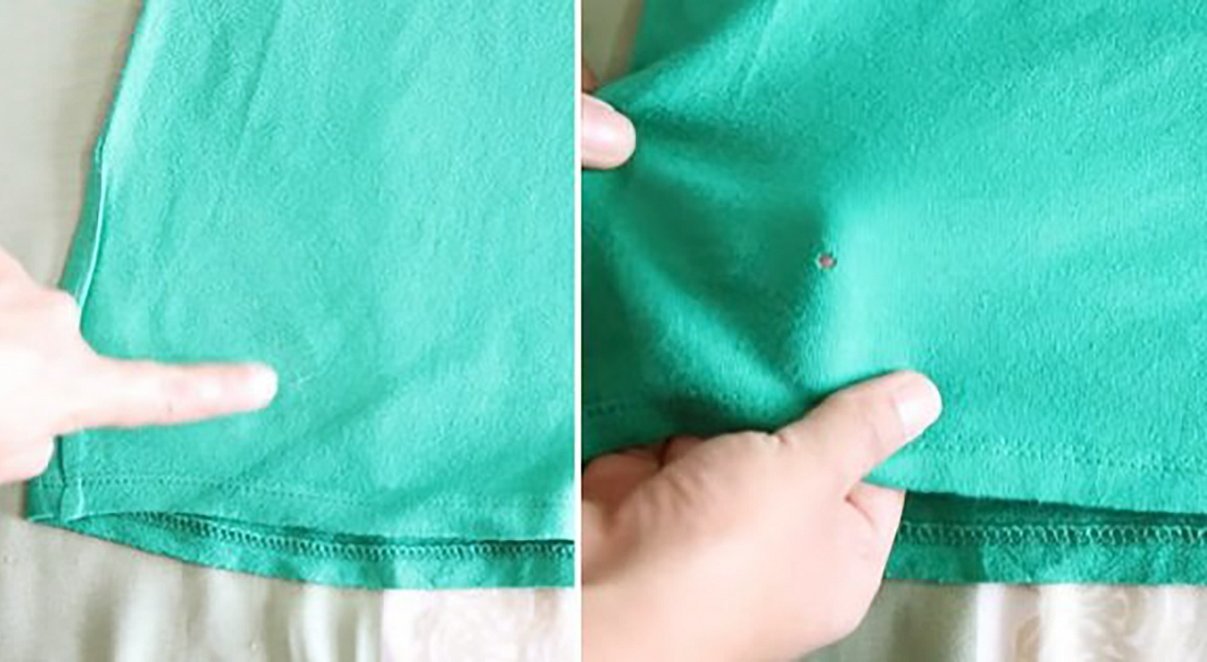
Algorithm for patching holes in fabric without a needle and thread:
- Buy a special adhesive tape called spider web.
- Cut off a piece from the strip that will match the parameters of the hole.
- Turn the fabric inside out. Lay the fabric on a flat surface, aligning the edges of the tear.
- Place a piece of webbing over the hole so that the material covers the surface of the tear.
- Having left the web on the inside, you need to turn the item right side out again. Align the edges of the opening again. Fix the web.
- You need to iron the damaged area for half a minute. When the fabric cools down, you can evaluate the quality of the treatment.
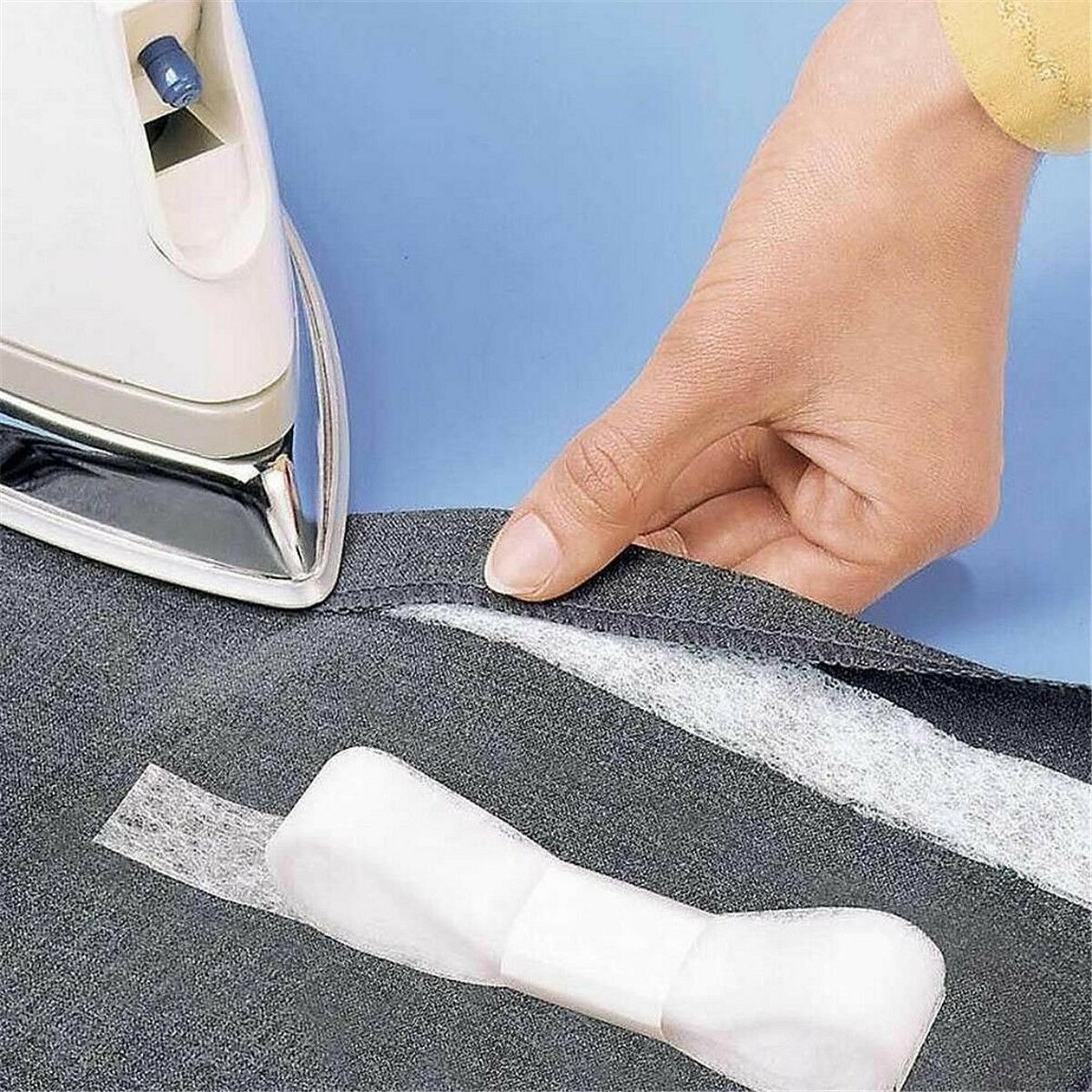
Please note! It will not be possible to sew up a large hole in this way, since the web will not be able to withstand much pressure.
Using such material, you can no longer darn thin fabric, leaving stitches on the canvas. Thanks to this manual method of processing damage to the fabric, you can not know how to sew at all.
Blind stitch
You can create a beautiful and neat seam that will connect, for example, tears in a jacket, using threads of any color and a regular needle. Thanks to the unique technique of stitch formation, the seam is hidden in the fold.
Life hack on how to form a blind stitch:
- Thread a needle with a thread of any color. Tie a knot at the end of the thread to secure it to the fabric.
- Gather the opening so that the edges meet evenly at the break points. A little fabric needs to be folded to the wrong side.
- Insert the needle from the wrong side and bring the tool out at the edge of the hole.
- Pass the second part of the hole through the fabric at the same level. The needle will come out from the wrong side.
- Along the line along the gap, form a small stitch and bring the needle to the front side.
- Again, thread the needle through the edge of the opposite side of the hole fabric, bringing it to the wrong side.
- Now all stages of work will be repeated until the entire space is stitched with such stitches.
- Pull the thread tight to hide the stitches in the folds of the seam fabric.
Additional information! This is relevant when sewing up seams that have come apart. It is not worth sewing up holes in this way on a flat surface - the fabric will become distorted or pulled tight.
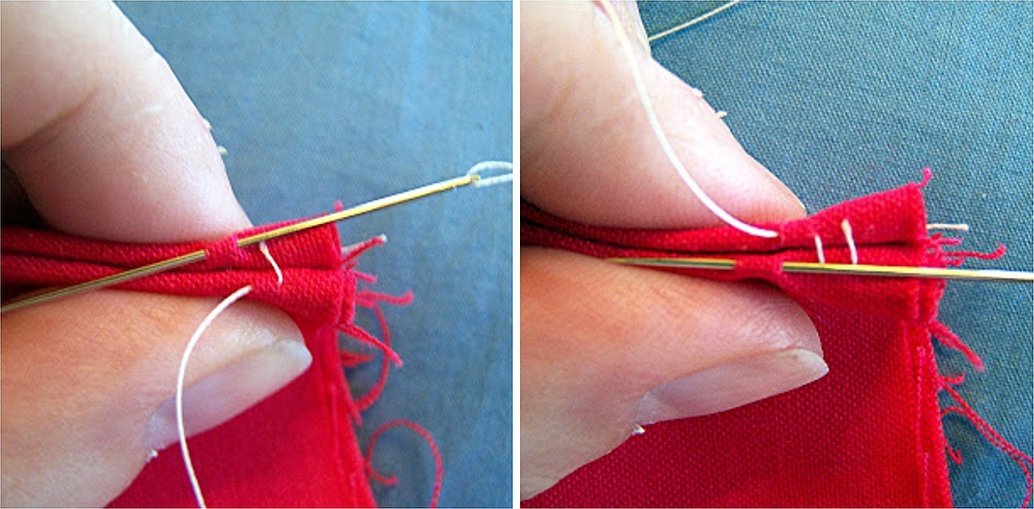
Using this type of seam, you can repair holes in the seams of any fabric. Thus, a shirt, jacket, coat or any other thing will look like new.
As for sewing up holes in knitwear, here you can also use a blind stitch, but of a slightly different configuration:
- Straighten the loops together from the gap.
- Thread the loops onto toothpicks on both sides.
- Using a needle and thread, pry the loops from each toothpick to tighten the fabric.

Usually, knitted items are sewn this way, but large knitwear is also pulled together in the same way. Therefore, a torn T-shirt made of good knitwear can be saved by using this type of stitching of loops.
Fixing holes in jeans
Jeans are a fairly popular fabric, from which they make not only pants, but also jackets, skirts, blazers, hats, shorts, breeches and much more. Although the textile is dense, over time even it becomes unusable.
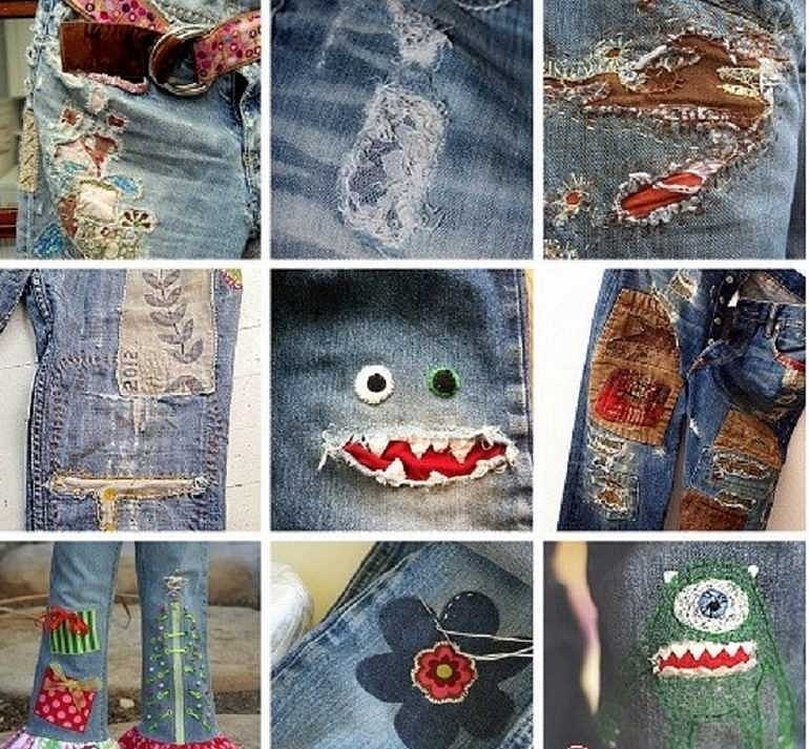
There are several options for eliminating holes in denim, each is determined by the location of the defect:
- Stitching. An ideal option for eliminating defects on jeans. It is especially easy to sew up holes that form along the crotch seam. You need to apply a patch to the inside and stitch the base with small stitches to the front side. Thus, the gap is closed with threads on a fabric base. Repaired trousers can be used for a long time without fear of re-rupture.
- Fabric applique is a universal method for patching holes in any product. It is enough to select a ready-made tactile base that is larger in size than the defect. It can be a flower, a star, an abstraction, or anything else. Apply the fabric applique and sew it on. The processing is done manually or with a sewing machine.
- The patch not only looks neat visually due to the technique of overlaying and sewing, but can also function as a decorative element. Patches are convenient for patching up large and small holes. You need to put a piece of fabric on the wrong side. And from the front side, stitch it to the base of the product. This is especially relevant when eliminating a defect on the knee due to a strong rupture of a previously decorative hole.
- Patch. A fashionable option for eliminating small defects on denim is to form a patch from the threads themselves. According to the corresponding instructions for making the form, the embroidery is prepared directly on the spot with the hole.
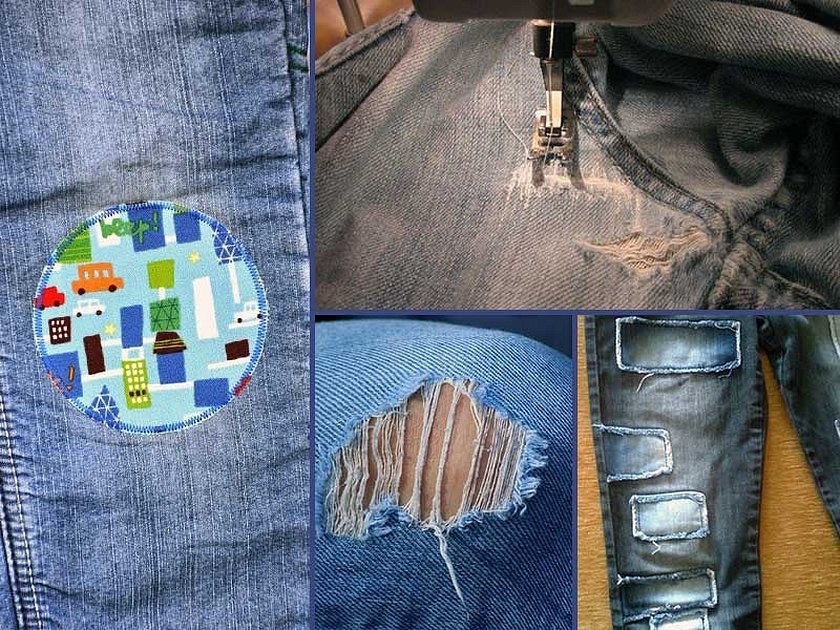
The most popular option for patching holes among young people remains decorative trim. With the help of lace, stickers with different characters, defects are easily eliminated. This option is ideal for those who have absolutely no sewing skills.
How to sew a patch by hand with an invisible stitch
If you can't mend a fiber tear, the only way to fix the defect is to apply a patch. You don't have to use a sewing machine to attach the patch - just create an invisible seam and match the fabric to the main fabric.
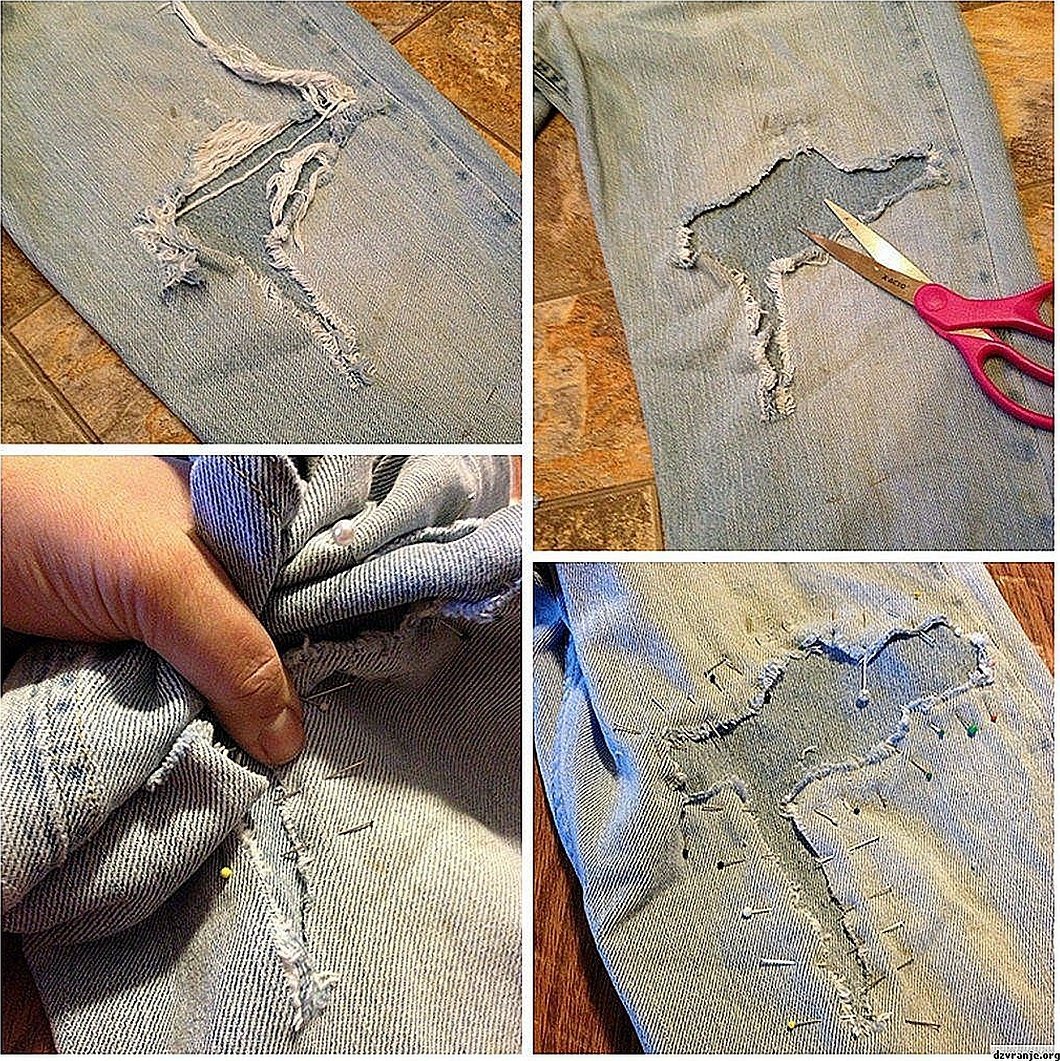
Algorithm on how to sew a patch manually with an invisible stitch:
- Place the fabric on the wrong side of the hole and measure out the required amount and shape of fabric. You need to take 2 cm more from each edge of the hole.
- Straighten the piece of fabric and secure it to the main fabric using a basting stitch or safety pins.
- You need to sew moving clockwise along the edge of the hole. A blind stitch is formed by unusual stitches. Bring the thread with the needle to the front side. Pass the needle through the fabric again next to the first puncture. In this case, form a loop from the thread, and lead the needle opposite the first two punctures and form a small stitch to secure the loop. Each stitch is repeated according to this pattern. When the last stitch is formed, you need to unravel the loops. This can be done by simply pulling the thread.
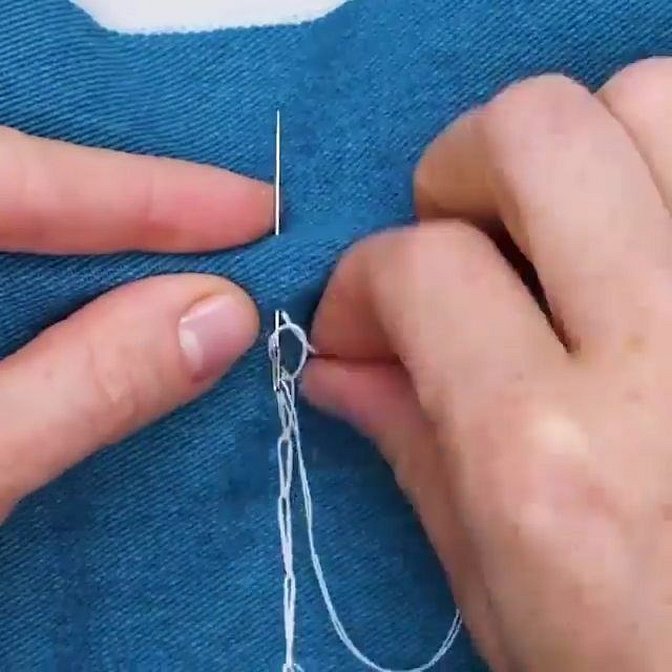
Important! To make the seam come undone, you don't need to secure the loop with a stitch in the last stitch.
You can simply form small, even stitches on the front side of the patch. But it is much more difficult to control the position of the needle and the size of such stitches. Patches are very good for repairing children's pants.
Some useful tips
Special tips will help you quickly and efficiently solve the problem. There are several useful recommendations:
- To avoid damaging the item, you should strictly follow the step-by-step instructions for completing the work.
- Having learned how to form a blind stitch, you can understand the technology of how to invisibly sew up an item.
- Sewing up holes can be made much easier if you use spider web tape instead of a standard needle and thread.
- In order to create an original decor on the place of the fabric tear, it is worth using Korean technologies of applying appliques.
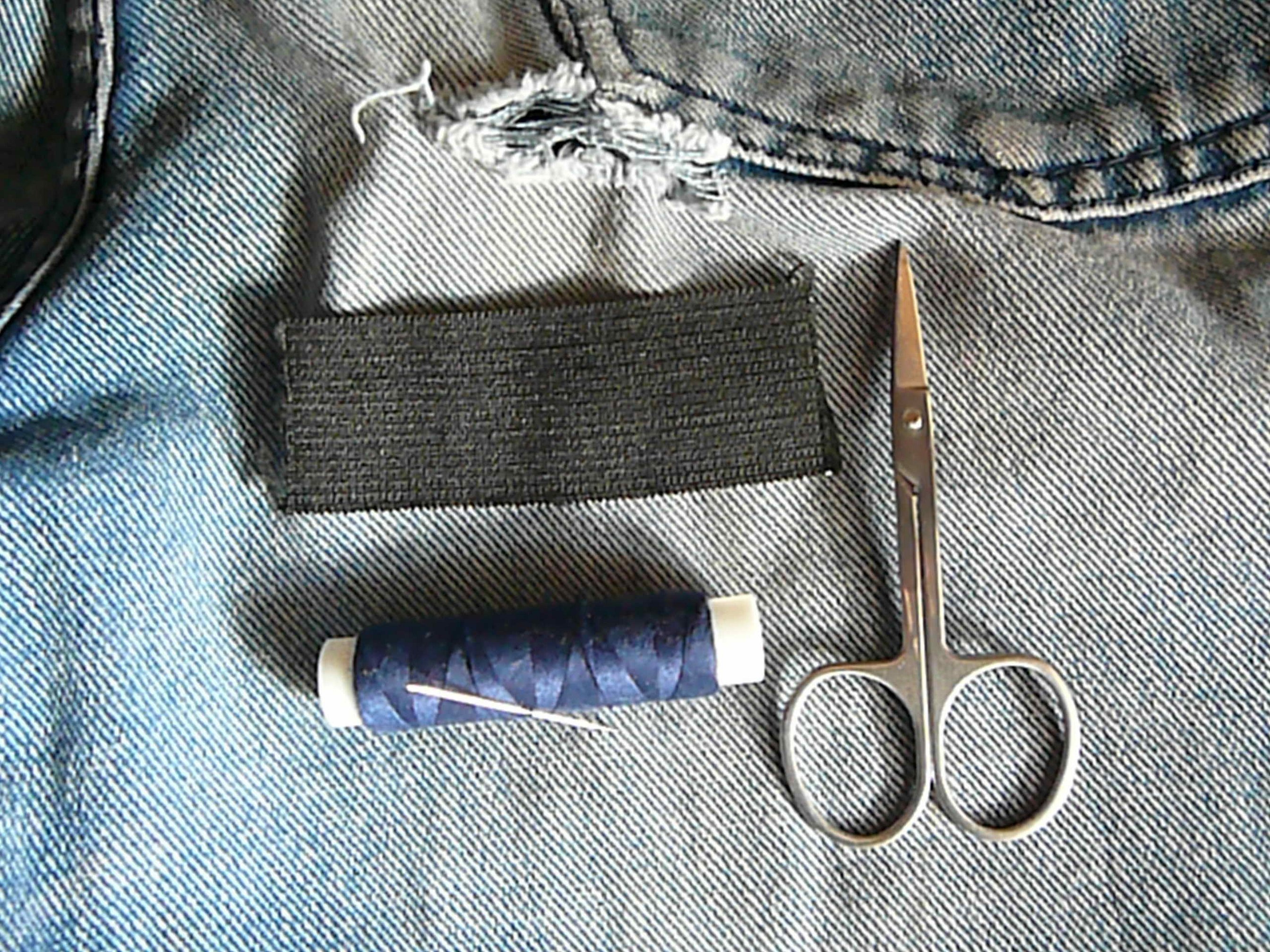
By mastering the technique of forming a blind seam, you can solve a lot of problems that arise with textile items of any kind. Products can be sewn, repaired and decorated. Patches, appliques and special stickers can be sewn on as overhead elements to eliminate a defect.




